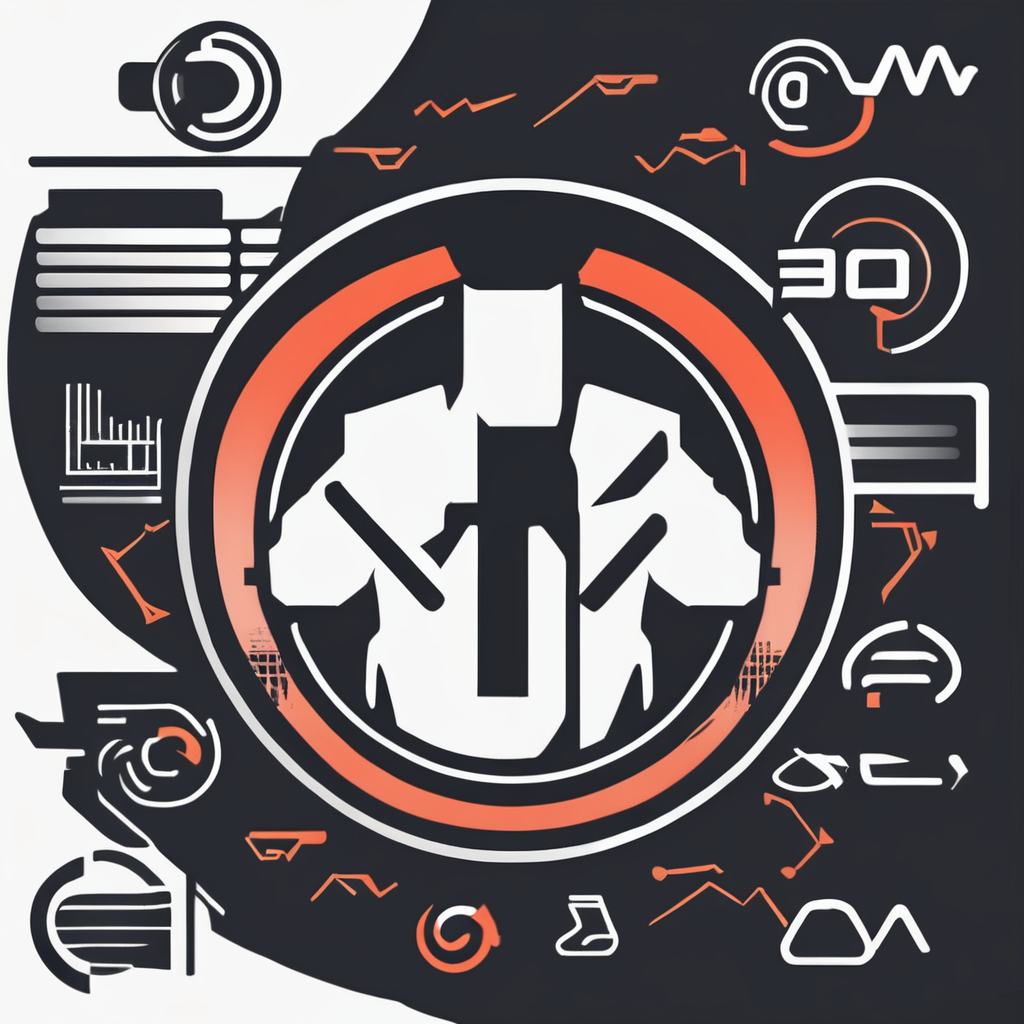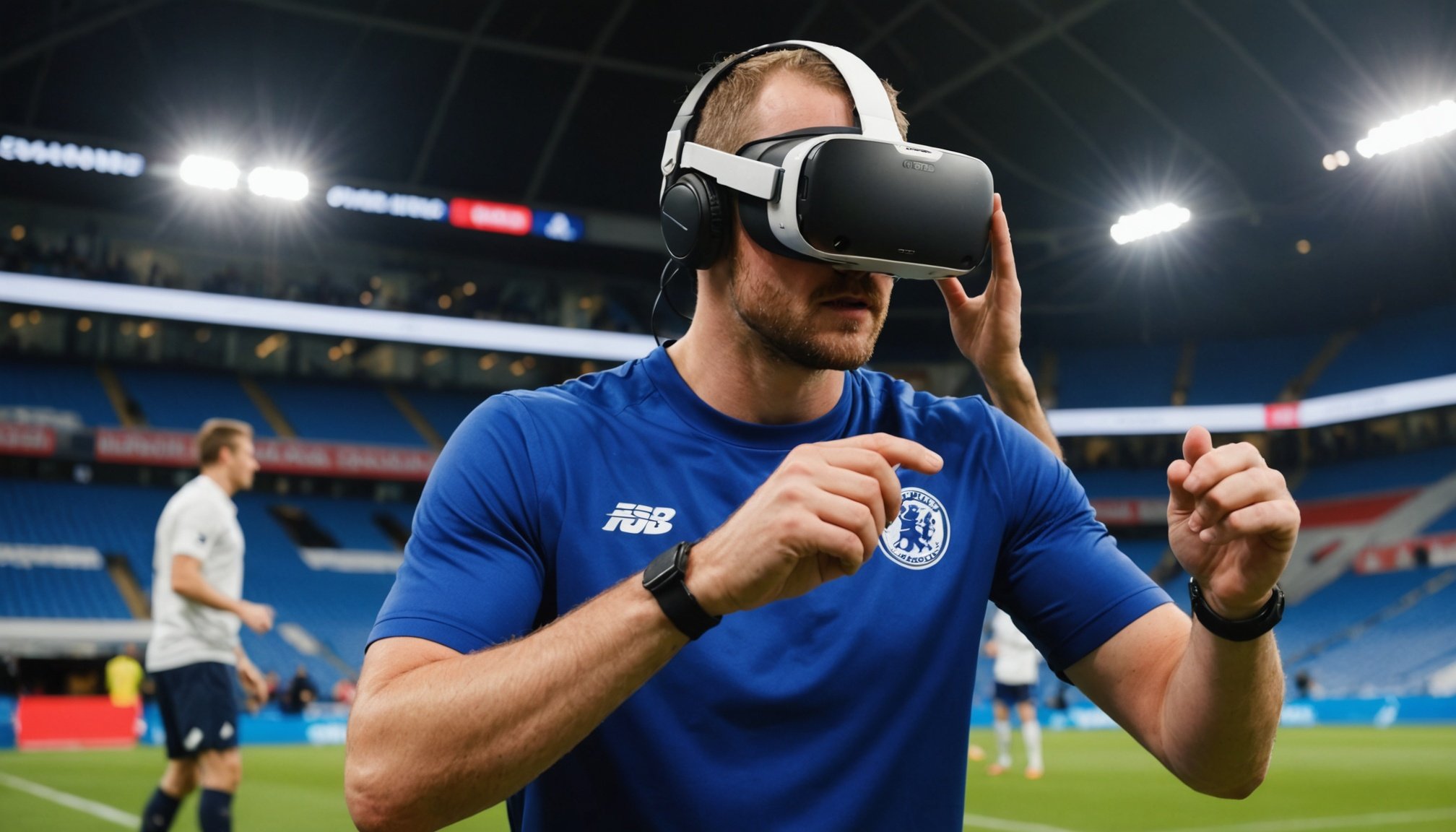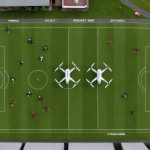Revolutionizing Training: The Role of Virtual Reality in the Development of UK Sports Teams
The Rise of Virtual Reality in Sports Training
Virtual reality (VR) is no longer just a buzzword in the tech world; it has firmly established itself as a game-changer in the sports industry. In the UK, sports teams are increasingly embracing VR technology to enhance their training programs, and the results are nothing short of revolutionary.
How VR is Changing the Game
VR technology is not just about immersing athletes in a virtual world; it’s about creating a highly realistic and interactive environment that mimics real-world conditions. For football players, for instance, VR training sessions can simulate match scenarios, allowing them to practice decision-making skills, tactical awareness, and physical movements in a controlled and repeatable manner.
In the same genre : Enhancing Athlete Injury Prevention: Innovative Strategies for UK Sports Therapists to Incorporate Yoga
“By working closely with Wolverhampton Wanderers Football Club and Rezzil, we’re positioning our researchers to push the boundaries of sports science, gathering data that will offer unprecedented insights into skill development, cognitive performance, and injury prevention,” says Dr. Ross Cloak, Associate Professor at the University of Wolverhampton[5].
Enhancing Athlete Performance with VR
One of the most significant advantages of VR in sports training is its ability to enhance athlete performance across multiple dimensions.
Topic to read : Leveraging Drone Footage: Transforming Team Tactics for UK Sports Clubs
Physical Skills Development
VR training can focus on improving physical skills such as reaction times, agility, and endurance. For example, the University of Wolverhampton’s partnership with Wolverhampton Wanderers Football Club and Rezzil involves using VR to enhance physical, tactical, and technical skills through immersive simulations. These simulations can be tailored to specific game scenarios, allowing players to practice and perfect their movements in a highly realistic environment[5].
Cognitive and Decision-Making Skills
VR is also being used to improve cognitive and decision-making skills. By simulating real-game situations, athletes can practice making quick decisions under pressure. This is particularly beneficial in sports like football, where split-second decisions can make all the difference.
“VR-based training protocols can refine critical game metrics, including player reaction times and decision-making skills,” notes Dr. Ben Greenhough, Head of Research at Rezzil[5].
Data-Driven Analysis and Real-Time Feedback
VR training is not just about the experience; it’s also about the data it generates. Advanced VR systems can provide real-time data and feedback, allowing coaches and athletes to analyze performance more effectively.
Real-Time Data Collection
During VR training sessions, various metrics such as reaction times, movement accuracy, and decision-making speed can be collected and analyzed. This data can be used to identify areas of improvement and to tailor training programs to the specific needs of each athlete.
“For instance, the VR headset can detect even the smallest of eye movements and provide detailed numerical data on metrics such as eye vergence, saccades, and directional accuracy,” explains a report on the use of VR in post-concussion assessments[4].
Performance Analysis
This real-time data can be fed into sophisticated analysis tools, enabling coaches to make informed decisions about player performance and development. Here is a detailed list of how data-driven analysis can benefit sports teams:
- Player Tracking: Real-time tracking of player movements and actions.
- Performance Metrics: Detailed analysis of reaction times, decision-making speed, and movement accuracy.
- Injury Prevention: Identifying potential injury risks through data on player fatigue and physical condition.
- Customized Training: Tailoring training programs based on individual player data.
- Game Strategy: Analyzing game scenarios to develop effective tactics and strategies.
Safety and Injury Prevention
VR technology is also playing a crucial role in safety and injury prevention.
Post-Concussion Assessments
For example, VR is being used in post-concussion assessments to help athletes return to play safely. The Neuroflex VOMS tool, used by Aspetar Hospital in Doha, leverages VR to objectively measure vestibulo-ocular and ocular-motor functions. This helps clinicians to assess the athlete’s readiness to return to the game based on precise numerical data[4].
Injury Risk Reduction
VR training can also reduce the risk of injuries by simulating high-risk scenarios in a safe environment. Athletes can practice movements and actions that might be risky in real-life training without the actual risk of injury.
“Technologies like VR glasses optimize athletes’ performance skills with MR-based games that can be played anywhere and at any time, reducing the risk of injuries associated with conventional training methods,” says Alexander Will, CEO of IMPROVR GmbH[2].
Enhancing the Fan Experience
While VR is primarily used for athlete development, it also has the potential to enhance the fan experience.
Augmented Reality and Virtual Reality Viewing
Fans can engage with sports in new and immersive ways through AR and VR technologies. For instance, VR can allow fans to experience the game from the athlete’s perspective, while AR can project real-time data and statistics onto the viewing screen, enhancing the overall viewing experience.
“The experience of fans in sports has been changed by augmented reality (AR) and virtual reality (VR) technologies. Through VR, fans can engage in an artificial environment where they feel like they are taking part in the game,” explains an article on the role of technology in modernizing the sports industry[1].
Practical Insights and Actionable Advice
For sports teams looking to integrate VR into their training programs, here are some practical insights and actionable advice:
Invest in Quality VR Equipment
- Ensure that the VR equipment is of high quality and comfortable for athletes to use.
- Invest in software that can analyze and provide real-time feedback on athlete performance.
Develop Customized Training Programs
- Use data from VR training sessions to tailor training programs to the specific needs of each athlete.
- Incorporate a mix of physical, tactical, and technical skills into the training programs.
Collaborate with Experts
- Work with sports scientists, coaches, and technology experts to develop and refine VR-based training protocols.
- Share findings and best practices within the sports community to advance the use of VR in sports training.
The integration of virtual reality into sports training is a significant step forward for UK sports teams. By enhancing athlete performance, improving safety, and providing real-time data analysis, VR is revolutionizing the way teams train and prepare for games.
As Dr. Ben Greenhough from Rezzil notes, “This partnership not only allows us to leverage cutting-edge technology to deliver real, impactful insights, but it also reinforces our commitment to supporting research that pushes the boundaries of performance and player welfare”[5].
In the world of sports, embracing new technologies like VR is not just about staying ahead of the curve; it’s about creating a better, more immersive, and more effective training experience for athletes. As VR continues to evolve, we can expect even more innovative applications in the sports industry, transforming the way we train, play, and experience sports.
Table: Comparison of Traditional and VR-Based Training Methods
| Training Aspect | Traditional Training | VR-Based Training |
|---|---|---|
| Physical Skills | Limited by real-world constraints | Simulates real-game scenarios in a controlled environment |
| Cognitive Skills | Limited feedback on decision-making | Provides real-time feedback on decision-making and reaction times |
| Data Analysis | Manual data collection and analysis | Real-time data collection and automated analysis |
| Injury Risk | Higher risk of injury during training | Reduces risk of injury by simulating high-risk scenarios safely |
| Fan Engagement | Limited interactive experience | Enhances fan experience through AR and VR technologies |
| Cost | High costs associated with equipment and facilities | Initial investment in VR equipment, but long-term cost savings |
| Scalability | Limited scalability due to physical constraints | Highly scalable, can be used by multiple athletes simultaneously |
This table highlights the key differences between traditional training methods and VR-based training, showcasing the advantages of integrating VR into sports training programs.
Case Studies of Virtual Reality in UK Sports Teams
Virtual reality offers transformative benefits in enhancing athlete performance, as demonstrated by several UK teams.
Team A: Football Training Innovations
A prominent UK football team has embraced VR implementation to revolutionise training approaches. Their VR training programme focuses on enhancing specific skills and tactical awareness, allowing players to practice and perfect techniques in immersive virtual environments. This method facilitates learning by mimicking real-game situations without the physical strain. Feedback from this VR implementation shows significant improvements in player decision-making and spatial awareness, contributing to overall athlete performance.
Team B: Rugby and VR Adaptations
A leading rugby team in the UK has also adopted virtual reality for training. Focusing primarily on physical conditioning and injury rehabilitation, the VR applications allow players to simulate match conditions and refine their skills safely. Data shows notable decreases in recovery times and improved effectiveness in injury prevention strategies, demonstrating how VR implementation supports sustainable athlete performance.
Team C: Benefits in Individual Sports
Individual sports, including athletics and swimming, have applied VR to elevate training efficiency. Athletes utilise virtual simulations to refine techniques and strategies, with performance metrics revealing enhanced athlete performance in competitive scenarios. These case studies underscore the transformative potential of VR across varied sporting disciplines in the UK.
Benefits of Virtual Reality in Sports Training
The advantages of Virtual Reality (VR) in sports training unfold through its capability to create immersive and realistic environments. Athletes can experience scenarios that closely mimic real-life competitions, enhancing their skills development without the physical risks. This performance enhancement contributes significantly to their preparedness and agility.
Immersive training in VR allows athletes to refine their techniques by practicing in controlled yet realistic situations. It offers a safe space where mistakes can be evaluated and corrected instantly, providing a tailored experience that traditional methods cannot match.
From a psychological perspective, VR training can boost an athlete’s confidence by reducing stress commonly associated with high-stakes performances. The familiarity with pressure scenarios developed through VR leads to improved mental resilience during actual events.
Quantifiable performance metrics exhibit notable improvements with VR integration. Studies have shown increased reaction times, precision, and strategy execution, demonstrating the tangible advantages offered by this innovative approach.
In essence, Virtual Reality is revolutionising the way athletes train by providing detailed feedback and unique experiences that drive skills forward. This transformation underscores the potential VR holds in reshaping sports training, making it a highly valued tool for modern athletes.
Challenges and Limitations of VR in Training
Virtual reality (VR) offers exciting possibilities, but several challenges impede its full adoption in sports training. One significant barrier is the necessity for specialized equipment, including VR headsets and sensors, which present major technology constraints. These tools require extensive setup and maintenance, making them difficult to incorporate into the regular training routine. Often, sports teams face adoption hurdles as they must rearrange or upgrade existing facilities to accommodate VR technology.
Moreover, financial considerations play a substantial role. For many sports teams, the cost of implementing and maintaining VR systems can be prohibitive. The limitations in budget allocations often hinder teams, especially smaller ones, from integrating this advanced technology into their training regimens. Additionally, ongoing costs such as software updates, equipment replacement, and employee training add layers of expense that teams must carefully consider.
Furthermore, VR’s interactive nature can clash with traditional training methodologies, leading to skepticism about its effectiveness. Balancing VR’s potential with realistic expectations becomes critical as teams navigate these game barriers to establish VR as an integral part of their training toolkit. Each of these hurdles underscores the importance of strategic planning and financial insight in embracing VR technology.
Interviews with Coaches and Athletes
Exploring insights from those directly involved in the world of sports reveals various personal experiences and expert opinions. Both coaches and athletes have unique perspectives on virtual reality’s integration into sports.
Coach Perspectives on VR
Many coaches illustrate the challenges and triumphs of VR training. Integrating VR can be daunting initially, with a steep learning curve. However, after overcoming initial hurdles, they recognise the technology’s potential in providing innovative training methods. Coaches often set expectations based on traditional training, but the reality of VR often surpasses these anticipations, offering immersive and data-driven experiences. Looking forward, coaches envision a future where VR becomes an indispensable tool, enabling tailored training plans and improving athletes’ mental preparedness.
Athlete Testimonials on VR Impact
Athletes provide valuable insights into VR’s role in their training. Their personal stories highlight VR’s ability to simulate intense game scenarios, offering practice environments unattainable in traditional settings. Athletes frequently note significant benefits, such as enhanced focus and faster reflexes due to repetitive exposure to game-like situations. These testimonies underline a transformative shift in their training regimen and suggest a growing reliance on VR for performance optimisation. As VR continues to evolve, athletes anticipate it paving new avenues for developing their skills more efficiently.
Future Trends in Virtual Reality for Sports Training
The emerging technologies in virtual reality (VR) are rapidly reshaping sports training landscapes. Leveraging these advancements, VR provides immersive experiences that transform traditional training methods. It’s vital to explore the potential future impact of these innovations on athletic development.
Predictions suggest that VR could become integral to sports training practices. A key trend is the use of realistic simulations to improve athlete performance. Imagine footballers honing their skills through virtual matches, practicing precise kicks or tackles within a controlled, risk-free environment. Such trends enable athletes to learn from experimentation without the physical wear and tear of real matches.
Additionally, VR’s future potential includes personalised training programs tailored to an athlete’s unique requirements. By analysing performance data, VR systems can recommend bespoke exercises, helping athletes focus on specific areas of improvement.
Looking ahead, these emerging VR technologies may well standardise into sports programs. In the UK, where innovations in sports science are vigorously adopted, it’s anticipated that VR will solidify as an essential tool, enhancing athletes’ capabilities far beyond today’s limits. The future of sports training is poised for a digital revolution, heralding a new era of athletic excellence.











